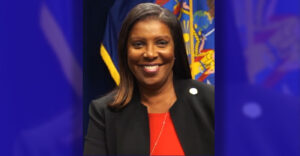For decades, research and anecdotal information have confirmed students in the United States experience a “learning loss” between the time school ends for summer vacation and the reopening of school in the fall. When we delve deeper into the research, we learn the loss is exacerbated in African American communities.
Some health care and education experts believe that economic circumstances, particularly the overwhelming presence of poverty in Black communities, lead to lower learning outcomes.
According to the Save Our Children website, more than 13 million Black, brown and rural kids live in poverty. COVID-19 worsened the economic situation, as it forced many low-income employees out of work starting in the spring of 2020.
However, the pandemic had mixed results on how Black students fared academically despite having to learn remotely, or in a hybrid environment.
Despite Chicago Public Schools loaning families more than 100,000 laptops and Comcast providing low-cost or free internet service, some students reportedly didn’t fare well with the different learning model.
“It was very much an adjustment.” South Shore resident Tameika Hinton explained the impact the COVID pandemic had on her 12-year-old son, a sixth-grade student at Chicago Collegiate Charter School when the pandemic hit and her son’s school switched to a remote learning model.
“He is a social learner. He likes to be around people,” she commented, adding that his school went into remote learning and her son sorely missed the interaction with other students. Hinton laughingly described him as “a class clown.”
The change in how he was learning forced her to stay at home as well, unable to operate her business as a trainer and consultant for residential cleaning companies. Conversely, she said she enjoyed it because she got to experience firsthand what her son was learning, as well as ensure he did not stray to gaming sites or YouTube when he was supposed to be following the teacher on the screen.
Hinton added that without the distraction of other students, her son was able to focus better on the lessons, even though there were instances “when he found himself doing other things.” She described her role as “sort of homeschooling, although I am not a teacher.” She also offered, “education begins in the home and the school is the secondary stage for learning.”
This school year her son is enrolled at Gary Comer School, which Hinton said has fewer students and is more challenging for her son who enjoys his new environment. She added he feels it is preparing him for his potential career as an entrepreneur.
Charles Kyle said he was especially proud of his sixth-grade son who was above average grade level in every subject when the pandemic hit, “then the remote and hybrid learning models changed all that,” Kyle noted, adding that during that time his son lost a grade level.
He elaborated, saying he understood that COVID forced students into the new learning environment, “however, what I think happened is we under-estimated the effect remote learning would have on kids. We thought that because adults took online courses and did night classes online, that it would be relatively easy for the kids. That just wasn’t the case. But, it was the exact opposite.”
A study by the organization Save the Children reported that in Black households between 60-70 percent of students actually logged onto school-supplied laptops, or any other learning device.
Kyle said a friend who is a teacher told him that she had students in her class who obviously never turned on their cameras for any lessons. “So that meant the students had no relationship with the teacher, and the teacher never even saw what the students looked like.” He added, “If the parent isn’t in the house, they don’t know what is going on.”
He speculated that some students with excellent grade point averages obtained those not because of stellar school work, “but simply because they turned on the camera for the lessons. I really don’t think remote learning was effective for the children already behind, but there weren’t other choices due to COVID.”
Like Hinton’s son, Tiffany Sanders’ granddaughter was adversely impacted by COVID due to the lack of normal school social structure. Sanders said the most difficult part of the new way of learning was getting her 9-year-old to focus on the school work. A “learning space” had to be created for the child as she felt because she wasn’t in school, she could do her work anywhere in the house, which proved not to be conducive to instruction, according to Sanders.
Sanders, a Chicago suburban transplant, lives in Atlanta now and enrolled her granddaughter in what is described as a “microschool.” There is one teacher for all the students who are in the same classroom grades K-9.
Sanders said the challenges of off-site learning were eased by the school’s principal holding regular meetings with parents and providing weekly lesson plans to keep students on track, adding that even though classes were not in session, the school conducted regular testing. The granddaughter was eager to return to school this fall as, Sanders noted, “she missed being around people, especially her teacher.”
A former Lindblom Math and Science Academy student was the exception to the learning deficiencies in COVID instructional models. Amina Gorman, whose father Brian described as having “always been an independent learner,” fared extremely well during the pandemic, well enough that she earned a full scholarship to St. Phillips Academy in Andover, MA. He shared she was always extremely focused and is doing well enough at the Massachusetts school that she was made a teaching assistant. “COVID didn’t slow her down at all,” Gorman said.
According to The 74, a website of the Edunomics Lab at Georgetown University, a June 2022 report shows “places like Chicago and Newark are still seeing very large declines in student performance compared to where students were pre-pandemic.” That same lab reported, “From March 2020 to June 2021, the average student in Chicago lost 21 weeks of learning in reading and 20 weeks in math, equivalent to missing half a year of school.”
While learning loss is typically viewed as a school matter, it has implications that can follow a student well into adulthood. Learning loss can lead to an individual being forced to repeat a grade. Students required to repeat a grade are more inclined to drop out from high school, according to the website savethechildren.org. Economic matters, including food insecurities, lack of internet access, unavailability of computers and kindred technology, are all partners in learning loss disparities.
COVID-19-induced sporadic learning models, switching from hybrid, to all-remote to in-person when others were remote learning, created environments rife with learning difficulties, multiplied the psychological concerns of contracting the disease, and drastically diminished students’ ability to focus on schoolwork.
Researchers and educators concur, dropout rates are pushed upward by students failing to take advantage of, or adapt to, the remote learning. This school year that rate is expected to exceed one million.






